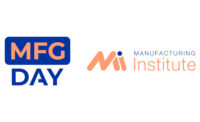DETROIT-The newly formed PEMAlliance aims to increase U.S. automakers’ global competitiveness through reduced variation in component quality.
Introduced at a luncheon held outside of Detroit, in Troy, MI, the Powertrain Engineering and Manufacturing Alliance, known as PEMAlliance or PEMA, is a Michigan-based group of automotive manufacturers, suppliers and universities.
Dwight Carlson, chairman and CEO of Coherix-one of PEMAlliance’s founding members-opened the event by telling everyone to enjoy the party. Carlson, who also co-founded and chaired the Auto Body Consortium, went on to say that the PEMAlliance would operate in a similar fashion to the Auto Body Consortium.
The PEMAlliance received a $4.9- million federal grant to develop engine-manufacturing technology with the potential to save domestic auto companies more than $1 billion annually.
The U.S. Department of Commerce award to the alliance will help fund a three-year, $12-million research program to develop digital, high-definition imaging systems for use in the production of engines and powertrain components. The National Institute of Standards and Technology (NIST) awarded the PEMAlliance grant as part of its Advanced Technology Program (ATP).
The NIST ATP award was presented to an alliance supported by General Motors Corp., Ford Motor Co., Chrysler LLC, Coherix Inc., Harley-Davidson Inc. and Roush Enterprises Inc., as well as the University of Michigan and Kettering University. Members of the organizations attended and described their vision for the project.
“A long-term objective is to reduce the capital, operating and warranty costs of automotive powertrain programs by 30% or more,” says PEMAlliance President Butch Dyer. “We’ll also be working to contribute to the future growth of Michigan’s economy.”
Based on holographic imaging technology invented at the University of Michigan more than a decade ago, the new metrology systems under development by PEMAlliance will enable companies to dramatically improve the speed and precision with which they measure component quality.
“Automotive engines are designed and manufactured with production variances of up to 12 microns or even more,” Dyer says. “The introduction of high-definition imaging systems to monitor machining center quality will enable manufacturers to dramatically reduce defects, improve launch times and increase operating efficiencies by achieving tolerance levels of 2 microns or less.”
The improvement in both accuracy and precision in engine production will allow automakers to dramatically reduce costs while producing higher quality motors with increased performance and better fuel economy.
The NIST grant will help fund work by engineering faculty members and graduate students at both the University of Michigan and Kettering University, says Carlson.
“PEMAlliance will be developing leading-edge technology,” Carlson says. “It’s what industry experts refer to as ‘disruptive innovation,’ breakthrough systems or processes that have the potential to revolutionize the way products are designed and manufactured.
“One of PEMAlliance’s members, Roush Enterprises, designs and makes NASCAR motors you see racing every weekend,” Carlson adds. “These motors have 100% more power per pound than your typical family sedan. It’s not that we don’t know how to make these motors, we simply don’t know how to engineer and manufacture them at high volume, with the highest quality and at the lowest cost.”
To be successful, Dyer notes, PEMAlliance’s program will require close collaboration between multi-disciplinary researchers in laser holographic interferometer metrology, laser optical system design including SuperContinuum lasers, multiscale data decomposition, data characterization, advanced manufacturing technology and process modeling.
Projects funded by NIST were selected through a competitive, peer-reviewed process that evaluated the scientific and technical merits of each proposal and the potential for broad-based benefits to the United States if the technology was successfully developed.
The PEMAlliance grant was one of the last research and development projects to be funded under NIST’s ATP program, which was replaced by the America Competes ACT.
For more information on PEMAlliance, go towww.PEMAlliance.org.
Get our new eMagazine delivered to your inbox every month.
Stay in the know with Quality’s comprehensive coverage of the manufacturing and metrology industries.
SIGN UP TODAY!Copyright ©2024. All Rights Reserved BNP Media.
Design, CMS, Hosting & Web Development :: ePublishing


